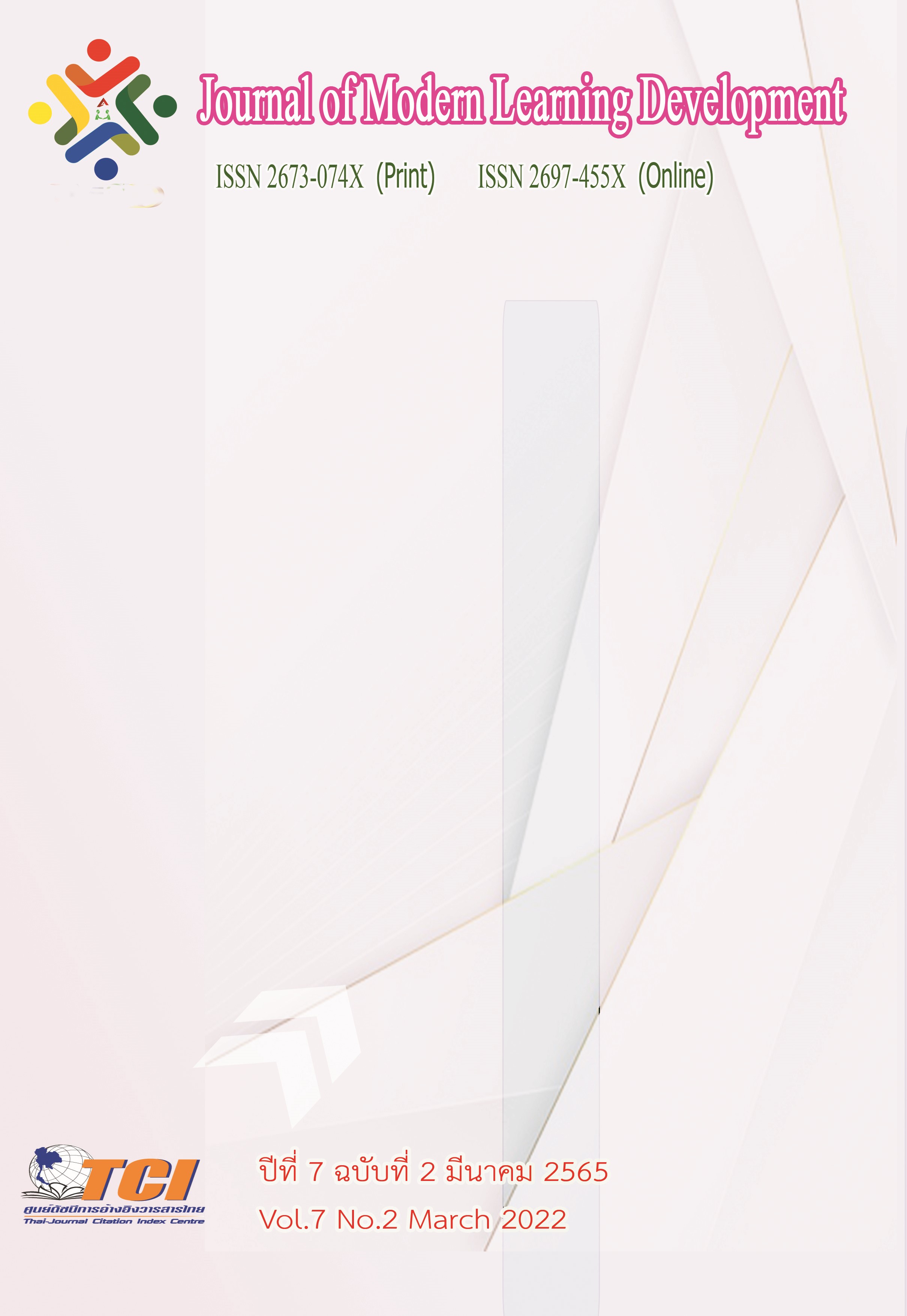The Development of Science Laboratory Environmental Management Model in Secondary Demonstration Schools of Rajabhat University
Main Article Content
Abstract
The school’s science laboratory plays a vital role for student learning. The science laboratory environmental management is supposed to operate effectively. The objectives of this research were 1) to study the environmental management problems of science laboratory, 2) to create a science laboratory environmental management model, and 3) to assess the quality of science laboratory environmental management model in secondary demonstration schools of Rajabhat University. The research process consisted of three steps as follows: 1) studying the environmental management problems of 30 science laboratory technicians, using a questionnaire which is a five-point scale with a reliability of 0.98. Mean and standard deviation were used to interpret the average level of problems. 2) creating the science laboratory environmental management model. 3) assessing the science laboratory environmental management model. The research revealed that: (1) The environmental management problems was 2.77 ± 0.86 at the moderate level. Many problems still remained to be improved and were used to determine the components of the future model. (2) The science laboratory environmental management consisted of 5 areas: 1) Hazardous Waste Management, 2) Defective Equipment Management, 3) Laboratory Environment, 4) Laboratory Management, and 5) Laboratory Safety. (3) The assessment of the science laboratory environmental management model based on the specified standards in four standards - 1) Feasibility, 2) Utility, 3) Propriety, and 4) Accuracy were at the highest level. (4) According to the stakeholders’ focus group, the science laboratory environmental management model was appropriate to use.
Article Details
References
กรมควบคุมมลพิษ. (2564). ความรู้เรื่องฝุ่นละออง. ออนไลน์. สืบค้นเมื่อ 25 สิงหาคม 2564. แหล่งที่มา: http://pcd.go.th/info_serv/air_dust.htm.
กรมอุตุนิยมวิทยา. (2564). สถิติภูมิอากาศ. ออนไลน์. สืบค้นเมื่อ 25 สิงหาคม 2564. แหล่งที่มา: http://climate.tmd.go.th/content/category/29
เก็จกนก เอื้อวงศ์. (2562). การสนทนากลุ่ม: เทคนิคการเก็บข้อมูลเชิงคุณภาพที่มีประสิทธิภาพ. วารสารศึกษาศาสตร์ มสธ., 12 (1), 17 – 30.
ณัฎฐกานต์ เกตุคุ้ม, ปัทมา นพรัตน์, จันทรัตน์ วรสรรพวิทย์และสัตติญา ดีดวงพันธ์. (2562). การสร้างแนวปฏิบัติการจัดการสารเคมีในห้องปฏิบัติการอย่างปลอดภัยสำหรับอุตสาหกรรมเคมีภัณฑ์ในประเทศไทย. Bulletin of Applied Sciences, 8 (8), 78-87.
บุญชม ศรีสะอาดและบุญส่ง นิลแก้ว. (2535). การวิจัยเบื้องต้น. มหาสารคาม: มหาวิทยาลัยศรีนครินทรวิโรฒ มหาสารคาม.
ลาวัลย์ เอียวสวัสดิ์. (2564). การจัดการของเสียจากห้องปฏิบัติการ. ออนไลน์. สืบค้นเมื่อ 28 กรกฎาคม 2564. แหล่งที่มา: https://www.recycleengineering.com/wp-content/uploads/2020/02/ lab-waste-management-guidelines.pdf
วาสนา กีรติจำเริญ. (2554). มาตรฐานห้องปฏิบัติการวิทยาศาสตร์. นิตยสาร สสวท. 39 (172). 46 – 49.
วิมลชญาน์ สถิตสุนทรพันธ์, ธานี เกสทอง และทีปพิพัฒน์ สันตะวัน. (2563). รูปแบบการบริหารจัดการขยะมูลฝอยในสถานศึกษา. วารสารมหาจุฬาวิชาการ. 7 (3), 157 – 173.
วิษณุพงษ์ ห้วยกรดวัฒนาและพัชรา สินลอยมา. (2563). แนวทางการพัฒนาการจัดการของเสียอันตรายจากห้องปฏิบัติการทางวิทยาศาสตร์. วารสารวิชาการ บัณฑิตวิทยาลัยสวนดุสิต, 16 (3), 128 – 142.
สำนักงานคณะกรรมการการศึกษาแห่งชาติ. (2545). พระราชบัญญัติการศึกษาแห่งชาติ. ออนไลน์. สืบค้นเมื่อ 28 กรกฎาคม 2564. แหล่งที่มา: https://www.bic.moe.go.th/images/stories / 5Porobor._2542pdf.pdf
สุวิมล ว่องวาณิช. (2549). การประเมินอภิมาน : วิธีวิทยาและการประยุกต์ใช้. กรุงเทพมหานคร: โรงพิมพ์แห่งจุฬาลงกรณ์มหาวิทยาลัย.


